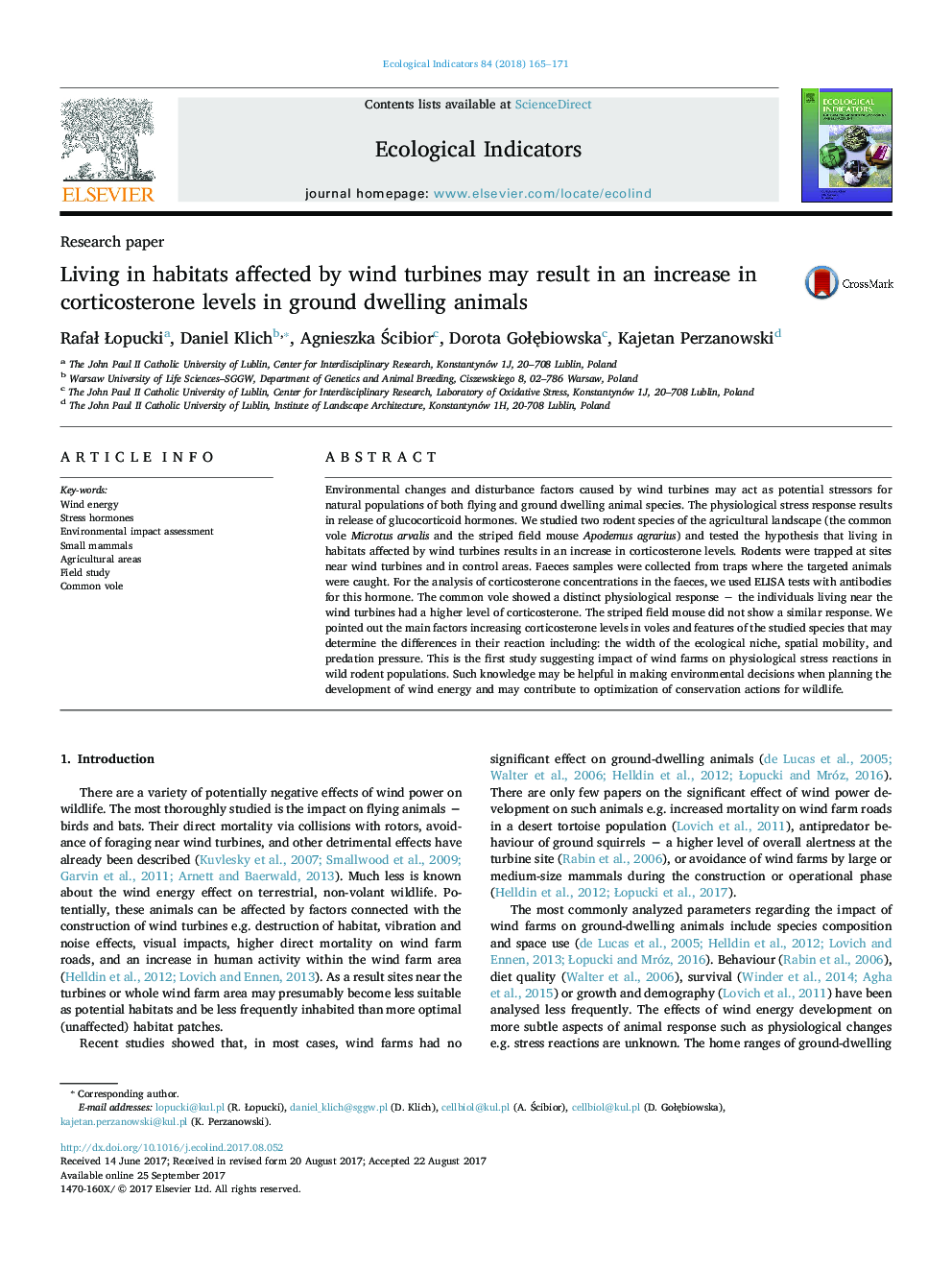| Article ID | Journal | Published Year | Pages | File Type |
|---|---|---|---|---|
| 5741539 | Ecological Indicators | 2018 | 7 Pages |
â¢Wind turbines may act as potential stressors for natural populations.â¢We studied effects of wind turbines on corticosterone level of two rodent species.â¢Voles living near the wind turbines had a higher level of corticosterone.â¢More attention should be given to the effects of wind farms upon non-flying wildlife.
Environmental changes and disturbance factors caused by wind turbines may act as potential stressors for natural populations of both flying and ground dwelling animal species. The physiological stress response results in release of glucocorticoid hormones. We studied two rodent species of the agricultural landscape (the common vole Microtus arvalis and the striped field mouse Apodemus agrarius) and tested the hypothesis that living in habitats affected by wind turbines results in an increase in corticosterone levels. Rodents were trapped at sites near wind turbines and in control areas. Faeces samples were collected from traps where the targeted animals were caught. For the analysis of corticosterone concentrations in the faeces, we used ELISA tests with antibodies for this hormone. The common vole showed a distinct physiological response â the individuals living near the wind turbines had a higher level of corticosterone. The striped field mouse did not show a similar response. We pointed out the main factors increasing corticosterone levels in voles and features of the studied species that may determine the differences in their reaction including: the width of the ecological niche, spatial mobility, and predation pressure. This is the first study suggesting impact of wind farms on physiological stress reactions in wild rodent populations. Such knowledge may be helpful in making environmental decisions when planning the development of wind energy and may contribute to optimization of conservation actions for wildlife.
